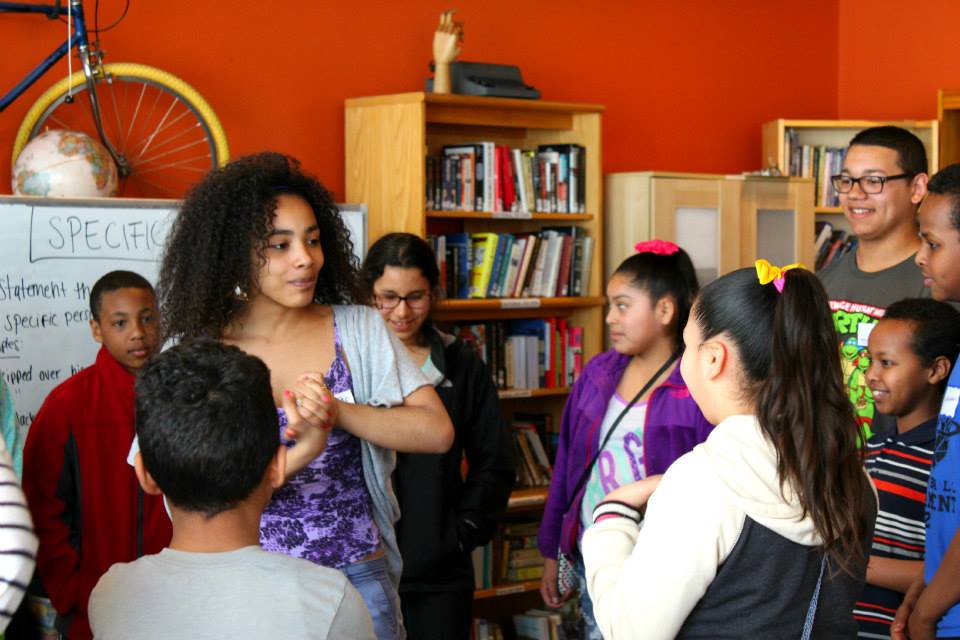available for purchase
at this time.
The How-To Guide for Promoting Diversity in Arts Management
Last month, Howlround published a piece by Elena Muslar entitled “Racial and Ethnic Diversity in Arts Management: An Exposé and Guide.” The article focused on Muslar’s research as part of her MFA thesis, which contained interviews that demonstrated common challenges and hang-ups the success and promotion of people of color. In her “Expose and Guide,” Muslar includes questions, suggestions, and pathways to creating opportunity and access into arts management positions.
Muslar noted four common responses in her interviews to current arts managers, about why there were not more people of color in leadership positions in their organizations:
- “My organization does try to reach out to people of color but they don’t apply.”
- “I’m not really sure why we haven’t had people of color in leadership positions.”
- “I fear my own voice in this conversation.”
- “I’m not sure how to get young people of color interested in this field.”
These answers are not surprising, and by now near commonplace. However, they are important to hear, and identify, so we can move past these fears and misconceptions. Without recognizing the hesitations, we are unable to challenge them, and consequently, leave them behind.
In all four responses, uncertainty is a common link. Responders are not sure why there is a lack of diversity in leadership, where their place is in the conversation, or how to resolve the issue. Uncertainty, here, is defeating. Rather than asking questions about how to perceive and create change, they are resolved in their inability and their unknowing.
Muslar does more than just raise these questions though, she provides answers.
Diversity is not a given, nor is it solved with a single initiative. It must be a combination of many efforts. Exposure to the arts is a crucial first step, but it is not enough. There must be access points beyond seeing the arts in performance. It’s not enough to watch a play, one must connect with the process of theatre.
How can this be accomplished? It’s important for our stages to reflect the communities we serve, and we need to speak with communities rather than to them. Consequently, young audiences should be able to find themselves on stage, connect with a character who they can see themselves in, and have this occur often. They need constancy. They cannot be relegated to the rare and occasional performance, or the bit character. They need protagonists. They need plays about them that aren’t solely about race. They need normalcy.

C1 Apprentices and Education Associate, Stephanie Recio led a monologue writing workshop for students at 826 Boston, November 2014.
Muslar also calls for advocacy and awareness. She highlights specific paths that arts administrators can guide young adults to, and how to help foster careers. This includes attending job fairs, creating internship programs, and mentorship. It’s important to let young people of color know about opportunities in the arts, but it’s critical to create the opportunity, and not to rest once it exists. We must continue to encourage their growth, as they continue their careers, graduate internships, and entry level jobs. Support is critical.
There is a pipeline issue that seems to keep people of color from engaging in the field and growing in it. There are a very few networks and opportunities that are working to combat this, but more need to be put in place in order to have a greater impact. The arts are still seen as an elitist form of entertainment for people with greater means. There is some diversity onstage through the work of artists, but this does not translate to the people working behind the scenes or in administrative capacities. Demographics are inevitably changing, but working in the arts is not typically considered a viable career path by parents of young people of color, thus the potential next-gen may get discouraged before they even begin.
Muslar encourages everyone, white allies, administrators of color, and many more, to find their voices and speak with confidence and pride. Diversity is important to the health and success of an organization, and it is up to us to make it happen. It’s time to start asking questions, and moving past our uncertainty. How can we make our field, our work places, and our arts representative of the many people in our communities? It is through our advocacy, our questioning and our strength.
Organizations should shy away from an exclusive approach and move more towards a “for the people and (inspired) by the people” methodology. It’s about inviting people in that may not even know they want to engage with the arts.
How do you work towards diversity in your community? What steps do you take? Let’s share our voices as we move towards a theatre that provides access and a voice to all.
